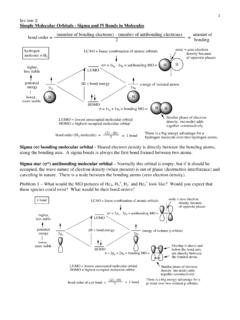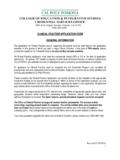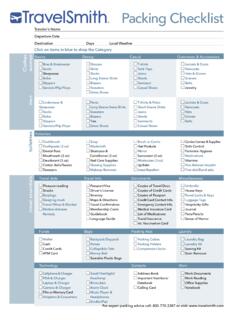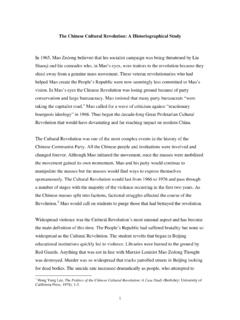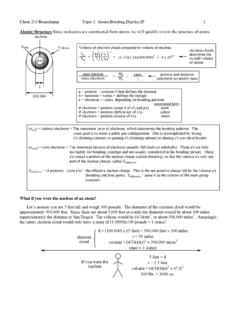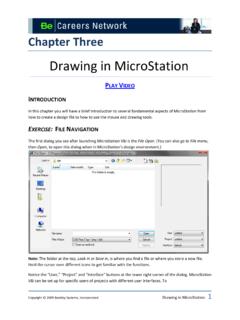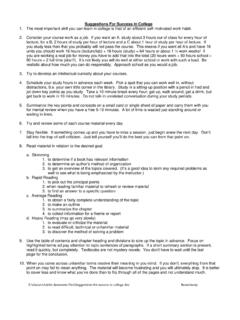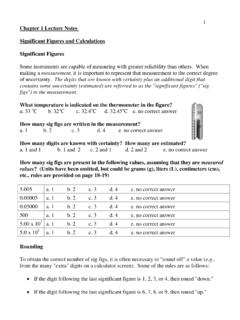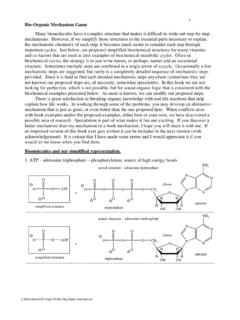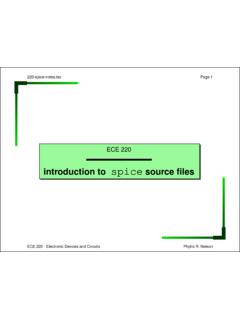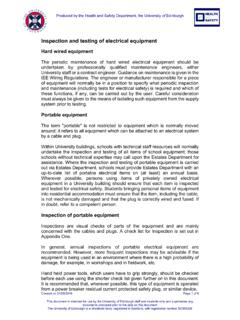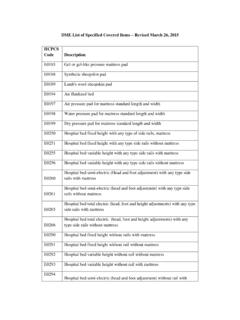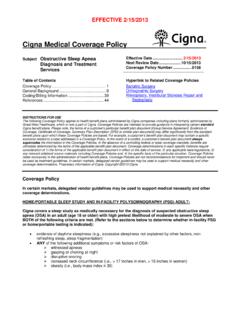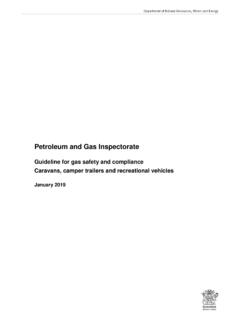Transcription of Electrical Household Appliances – Lesson 6 Appliance ...
1 1 Electrical Household Appliances Lesson 6 Appliance Physics, Tasks, Power, and EnergySummer 2004 Cal Poly PomonaObjectives: (i) Investigate the physical principles involved in the operation of commonelectrical Household Appliances . (ii) Identify the tasks done by each Appliance .(iii) Determine the power ratings of each Appliance . (iv) Estimate the energy eachappliance uses monthly and the total energy use for all Appliances . (v) Compare the latterestimate with actual Electrical energy use, as shown on a utility : The electric power required by an electric Appliance can be estimated as(the Appliance 's electric CURRENT) (the VOLTAGE across its terminals).
2 For exampleif the current through a Household light bulb is amperes and the voltage across itsfilament is the common 120 volts, then its power is ( amperes) (120 volts) = 60ampere volts = 60 watts. Note: 1 amp 1 volt is defined to be 1 we saw earlier, power represents the RATE at which electric energy is being fed to anappliance. Note that the power is properly zero if the voltage across the Appliance is zero which is true when it is switched OFF. Fortunately, most electric Appliances havelabels that give their power ratings, and it is not necessary to know the electric currentsflowing through them to calculate their power requirements. Furthermore, theVOLTAGE supplied to most Household Appliances is 120 volts, so Power = (120 volts) (CURRENT in amps).
3 From this equation, it is clear that higher power appliancesrequire more electric energy, in kilowatt hours (kWh), used by an Appliance over a time interval isEnergy (kWh)=POWER (watts) TIME (hr)1000 (watt hr/kWh).Example: The electric energy used by a 100 watt light bulb operating for 24 hours is(100 watts) (24 hours) / (1000 watt hours/kWh) = kWh. The typical cost of 1 kWhof electric energy from Southern California Edison is approximately $.13. Thus kWhof electric energy costs ( kWh) ( $/kWh) = $ electric Appliances operate using one or more of the following three parts:A. electric motor ( , a fan),B. electric current flowing through a conductor that gets hot ( , a toaster),C.
4 An electromagnet ( , a solenoid valve that quickly opens and closes, controllingwater flow in a washing machine).2A good, educational exercise is to try to identify which one or combination of these threeparts apply to common 1 Appliance Physicsa. Discuss with your partner which of the above three parts, A, B, C, apply to: a lightbulb, vacuum cleaner, refrigerator, electric toothbrush, radio, computer, portableelectric heater, dishwasher, and door chime. Write your conclusions in paragraph ortable Make a table with 5 columns, as illustrated below. In column 1 show each appliancename. The headers of columns 2, 3, and 4 are, respectively, "electric motor," "heatedelectric conductor," and "electromagnet.
5 " Column 5 has the header "other." List asmany electric Appliances in your home as you can (a partial list is shown on page 4),writing YES or NO, as appropriate in each of columns 2-4 and writing descriptivewords in column 5 if the Appliance has other interesting Electric MotorHas a HeatedElectric ConductorHasElectromagnetOther InterestingPartsActivity 2 Energy TasksTypically, an Appliance is designed to do a primary task, and it is helpful to understandand use the following five task categories:heating (H)cooling (C)lighting (L)mechanical work (W)information-processing & transfer (IPT)For example, a toaster does heating, a refrigerator does cooling, a light bulb does lighting,an Electrical tooth brush does mechanical work (namely, it exerts a force through somedistance), and a cell phone does information processing and transfer.
6 Some Appliances domore than one task. For example, most of the energy fed to a light bulb becomes heatrather than light. This heat delivery is a helpful secondary task in winter, but an annoyingproblem that can require increased air conditioning in Make a table with 6 columns, as illustrated on the next page. In column 1 show eachappliance name. Column 2 primary task, column 3 Appliance 's power rating,column 4 estimated hours used monthly, column 5 calculated monthly energy usein kilowatt hours (kWh), and column 6 calculated monthly cost. You may use theattached table of typical Appliance powers to estimate the power required by TaskPower (watts)MonthlyHours ONMonthlyEnergy (kWh)Monthly Cost(@ $.)
7 13/kWh) a recent electric bill from your home. Compare your estimated energy use inkWh with the number of kWh actually billed by the utility company, and calculate thenet cost of 1 kWh of electric your bill, calculate the kWh per person, per day. Share your result with the restof the a microscopic model to explain why a conductor heats up when electriccurrent flows through it. Sketch and describe Given that electric currents generate magnetic fields, why don't your keys getattracted to the power cords on electric Appliances ? energy tasks have the highest power requirements? How can you minimizethe cost of operating these Appliances ? "too many" Appliances are ON simultaneously, why might a fuse blow or a circuitbreaker trip?
8 Hint: Appliances are connected in parallel. Recall what happens to themaximum current in a parallel circuit as more and more devices are Why do some Appliances have 3-pronged plugs? Hint: The third prong is connectedto the Appliance 's chassis (metal frame) and plays a role only if, due to some failure,the chassis becomes electrically charged, possibly endangering its are several ways to use less electric energy: (i) increase an Appliance 'sefficiency (perhaps by buying a newer model), (ii) partially or fully curtail usage ofsome Appliances , (iii) substitute another fuel for some tasks. List some ways youmight do each of these in your Appliance Power Ratings(which might differ from your Appliances ) Appliance NamePower (watts)Air Conditioner (room)1350 Central5000 Automatic Blanket200 Ceiling Fan75 Clock4 Clothes Dryer4500 Coffee Maker850 Computer360 Dishwasher1300 Evaporative "swamp"cooler100 Freezer, frost-free440 Food Mixer or Blender110 Furnace blower fanmotor400 Garbage disposal400 Heater, portable1500 Hair Dryer1250 Iron (hand)1100 Lighting-Kitchen250 Lighting-Bedrooms450 Appliance NamePower (watts)Lighting-Outdoor150 Lighting-Living Room500 Lighting-Office150 Lighting-Other400 Microwave1450 Pool filter motor1500 Radio-Stereo110 Range (stove top)
9 2000 Range (oven)5000 Refrigerator, standard265 Refrigerator, frost-free500 Television250 Toaster1100 VCR25 Vacuum cleaner700 Washing machine600 Water heater (electric)3200 Waterbed heater300 Whole-house exhaustfan110
